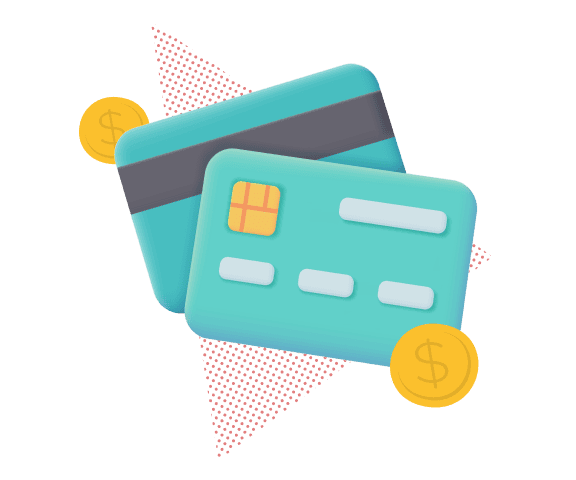How Credit Card Payments Are Applied to Your Balance in Singapore
Updated: 9 Oct 2025
Written bySingSaver Team
Team
The information on this page is for educational and informational purposes only and should not be considered financial or investment advice. While we review and compare financial products to help you find the best options, we do not provide personalised recommendations or investment advisory services. Always do your own research or consult a licensed financial professional before making any financial decisions.
While your credit card statement presents a single total amount due, understanding how your payments are allocated is more nuanced. Depending on your card usage, your outstanding balance may be divided into various categories, including:
-
Purchase balances reflecting transactions made with the card.
-
Balance transfer balances, representing debts transferred from other credit facilities.
-
Cash advance balances, incurred from ATM withdrawals.
Each of these balances can carry different Effective Interest Rates (EIR). When you make a payment on a card with multiple balances, Singaporean card issuers will automatically distribute your payment according to Monetary Authority of Singapore (MAS) regulations rather than seeking your specific instructions.
Credit Card Payment Tips
How do credit card payments work in Singapore?
In Singapore, credit card payment allocation is guided by the Monetary Authority of Singapore (MAS) regulations, which aim to protect consumer interests. Typically, when you make a credit card payment, it's divided into two parts:
-
Minimum payment: This is the obligatory amount you must pay each month, as stipulated in your credit card agreement. While MAS regulations provide guidelines on fair practices, card issuers generally have some discretion in how they apply the minimum payment. Often, they may allocate it towards the balances with the lowest interest rates.
-
Excess payment: This refers to any amount you pay above the minimum. MAS regulations require card issuers to prioritise the application of this excess payment to the balances with the highest interest rates first. Any remaining amount is then applied to the other balances in descending order of their respective EIR (Effective Interest Rate).
In practice, it would look like this:
|
Outstanding Balance |
||
|
S$1,200 of purchases at 18% EIR |
S$200 of cash advances at 28% EIR |
S$500 of balance transfers at 5% EIR |
|
Your minimum payment is S$25. To reduce potential interest fees, you chose to pay S$300 instead. Your payment can then be managed like so: |
||
|
S$50 will go to the purchase balance. |
S$200 will go to cash advances, which have the highest EIR. |
S$50, the minimum payment, will go to balance transfers since it has the lowest EIR. |
|
Before interest charges were added, the remaining balances would be as follows: |
||
|
S$1,150 of purchases at 18% EIR |
S$0 of cash advances at 28% EIR |
S$450 of balance transfers at 5% EIR |
» Read more: How to meet the minimum spend on your credit card
Deferred interest offers: What are they and how do they help with credit card payments?
Deferred interest offers allow you to delay paying interest on a purchase for a specific period. However, if the entire balance isn't paid off by the end of this period, interest is applied retroactively, dating back to the original purchase date. This differs significantly from standard 0% interest promotions, where interest is only charged on remaining balances after the promotional period ends.
While less common in Singapore than in some other countries, deferred-interest offers may appear on certain store-specific cards or cards that provide benefits for medical bill payments. Here's how it differs:
-
Standard 0% EIR: No interest during the promotional period, and only future balances incur interest after.
-
Deferred-interest offers: If you fail to pay the entire balance within the set period, you'll be charged interest on the full original purchase amount, not just the remaining balance.
Imagine purchasing a S$1,000 appliance on a card with a 12-month deferred-interest offer and a 24% annual EIR. If you only pay off S$500 within those 12 months, you'll be charged 24% interest on the entire S$1,000, not just the remaining S$500.
To avoid falling into high-interest traps with deferred-interest offers, it's crucial to meticulously track your spending and ensure you can pay off the full balance before the promotional period ends. Regularly review your credit card statements and set reminders to avoid unexpected charges.
» Read more: How to avoid having to pay your credit card interest
Not sure where to begin?
Get insights into your credit health and personalised credit card recommendations so that your first credit card experience will be a smooth one.
How to manage your credit card payments to avoid billing hiccups
Effectively managing your credit card payments is crucial to avoid unnecessary interest charges and maintain a healthy financial standing.
A key strategy is to consistently pay more than the minimum amount due. This ensures that a larger portion of your payment goes towards reducing your principal, particularly high-interest balances, rather than just covering the interest.
For those carrying substantial balances, consider exploring balance transfer loans or consolidating your debt into one personal loan, which can offer lower interest rates and a more manageable repayment plan.
Prioritising your payments is essential for long-term financial health. By focusing on paying off high-interest balances first, you minimise the overall interest you accrue.
Additionally, avoiding the practice of carrying balances over extended periods can prevent the accumulation of significant debt and help you maintain a positive credit history. Consistent and strategic payments not only reduce your financial burden but also contribute to a better credit score, which can be beneficial for future financial endeavours.
Stay ahead in everything finance
Subscribe to our newsletter and receive insightful articles, exclusive tips, and the latest financial news, delivered straight to your inbox.
About the author
SingSaver Team
At SingSaver, we make personal finance accessible with easy to understand personal finance reads, tools and money hacks that simplify all of life’s financial decisions for you.

